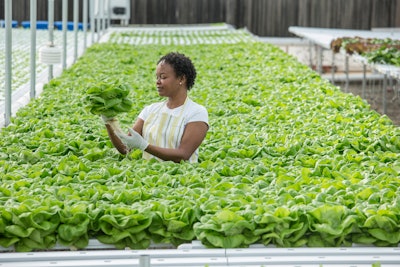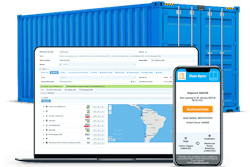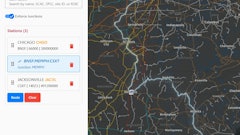
The Coronavirus disease (COVID-19) rocked the food industry with unprecedented consumer demand surges and shifts in buying channels. One of the lessons quickly learned was that most forecasting models simply couldn’t adapt fast enough to keep up, leaving shelves empty, consumers fuming and sales dropping.
In response, some food suppliers and retailers made judgement calls together in real time to streamline SKUs, redirect inventory, bypass distribution centers and deliver direct to stores, redirecting products from foodservice to retail and other actions in an effort to meet demand where it exists.
But, some food suppliers fared better, taking advantage of opportunities to sell more products while competitors battled out-of-stocks. These companies had one thing in common—an established demand forecasting technology platform and sales and operations planning (S&OP) processes in place, allowing them to more readily pivot.
Beyond that, these companies also had a culture that enabled agility. After all, effective demand forecasting isn’t just about technology and algorithms. It’s also about teamwork, transparency and trust.
These factors are critical in helping organizations efficiently navigate disruptions and support success in “normal” (or “New Normal”) times. A quick look at these attributes gives insight into success factors that any company can adopt.
Teamwork
Cross-functional dialogue is essential to building consensus and creating an agile demand forecast and plan, especially during times of crisis. The companies better able to pivot during COVID-19 created an S&OP (or “war room”) session starting with a statistically sound forecast supported by facts and proven estimating techniques, unbiased by manual overrides, functional goals and perceptions. This ability to collaboratively agree on a singular baseline was more efficient (and likely to be accurate) than working from multiple spreadsheets and opinions. The following collaboration best practices are critical to improve demand forecast accuracy:
● Include many perspectives—sales, marketing, product management, procurement, transportation, production, human resources and finance, as well as external supply chain and trading partners.
● Clarify roles and responsibilities, define each step in the process and ensure all participants know their input is valuable and that the process itself is open to continuous improvement. Clearly defined roles and responsibilities within a structured process and shared goals across departments encourages teamwork.
● Leverage each participant’s expertise and create a central archive (demand signal repository) to house relevant research and data. In addition to consumer demand signals, continually source, share, and collectively learn from new demand data sources, especially during times of disruption.
● Feed market intelligence back into advanced statistical forecasting tools to improve their algorithms.
o Machines quickly learn from patterns, relationships and anomalies found in data. These ever-improving models can rapidly create robust “what-if scenarios,” allowing the team to proactively consider multiple disruptions or risks to make decisions related to production schedules, inventory diversions, customer allocation strategies, alternative suppliers, etc.
● Human experience and judgement are still needed to set strategic direction, make decisions, develop action plans, and ensure implementation. Combining artificial intelligence/machine learning (AI/ML) advanced analytics with cross-functional internal and external market expertise is extraordinarily powerful.
Transparency
Effective teamwork requires transparency of demand forecasting assumptions, inputs, methodology, outputs, accuracy, inventory and supplier capacity. Without transparency, it is difficult, if not impossible, to achieve alignment behind a single forecast. Without alignment, each upstream process generates its own forecast. Biases, errors and “safety stocks” are compounded along the way. This creates what is known as the “Bullwhip Effect,” where a +/-5% change in actual consumer demand impacts upstream suppliers by as much as +/- 40%. Empty store shelves resulting from today’s unprecedented shifts in consumer demand (which far exceed 5% in many categories!) clearly demonstrate this theory. These key approaches can help build the transparency needed to avoid this effect.
● In situations like COVID-19, where true shortages exist and short-term consumer demand is difficult to predict, product allocation comes into play. A triaging process that prioritizes customers by strategic importance, margin, and revenue will help safeguard commercial relationship continuity. Supply chain information sharing of demand forecasts, capacity, inventory and allocation methodology helps alleviate customer anxiety and strengthens partnerships.
● Transparency also applies to the forecasting algorithms themselves. Be explicit about assumptions, variables, weights and calculations. If the S&OP team understands the forecast logic, they can analyze, challenge, improve and execute against it more effectively. Eliminating “black box syndrome” helps eliminate blaming “the system” when actuals don’t align perfectly with the forecast.
● Accuracy transparency is also essential. Automate back-testing of each forecast to regularly measure and report accuracy and help quickly react to inaccuracies. Conduct deep dives into any significant forecast misses. Compare actual results against assumptions to learn, validate or improve.
● Use a secure technology platform to facilitate seamless, real-time collaboration and communication. Leverage simple self-service and data visualization tools to make forecasting output and the data signal repository, accessible and easily understood by everyone, including external supply chain and customer partners.
Trust
Teamwork and transparency build trust—in each other, data, predictive analytics, process, and ultimately, in the results. Data sharing and access are foundational to demand forecasting and trust can be built in several key areas of the process.
● All parties need to trust that the data they contribute, and the process will be kept secure and used only for agreed-upon purposes. Clearly articulating each party’s data stewardship responsibilities provides a foundation for mutual trust.
● Trust in the data itself is also important. Data quality must be validated, and definitions must be clear.
● Finally, trust in the science of predictive analytics is essential. Currently, organizational comfort level with predictive analytics varies. Understanding how AI systems reach their conclusions, and the ability to identify and articulate the key factors used by a model to produce a forecast is essential to building trust in the AI/ML outputs and to transparency.
Over the past several months, new business models, partnerships and channels have emerged to help ensure access to safe, healthy food. And, the most resilient food brands were unafraid to throw their playbook out the window and re-set expectations.
Demand forecasting technology, especially advanced algorithm-based AI and ML systems, can create a foundation for agility. But, teamwork, transparency and trust will bring to light the strengths and weaknesses in existing demand forecasting processes in order to help food supply chains navigate through the pandemic and beyond.



















